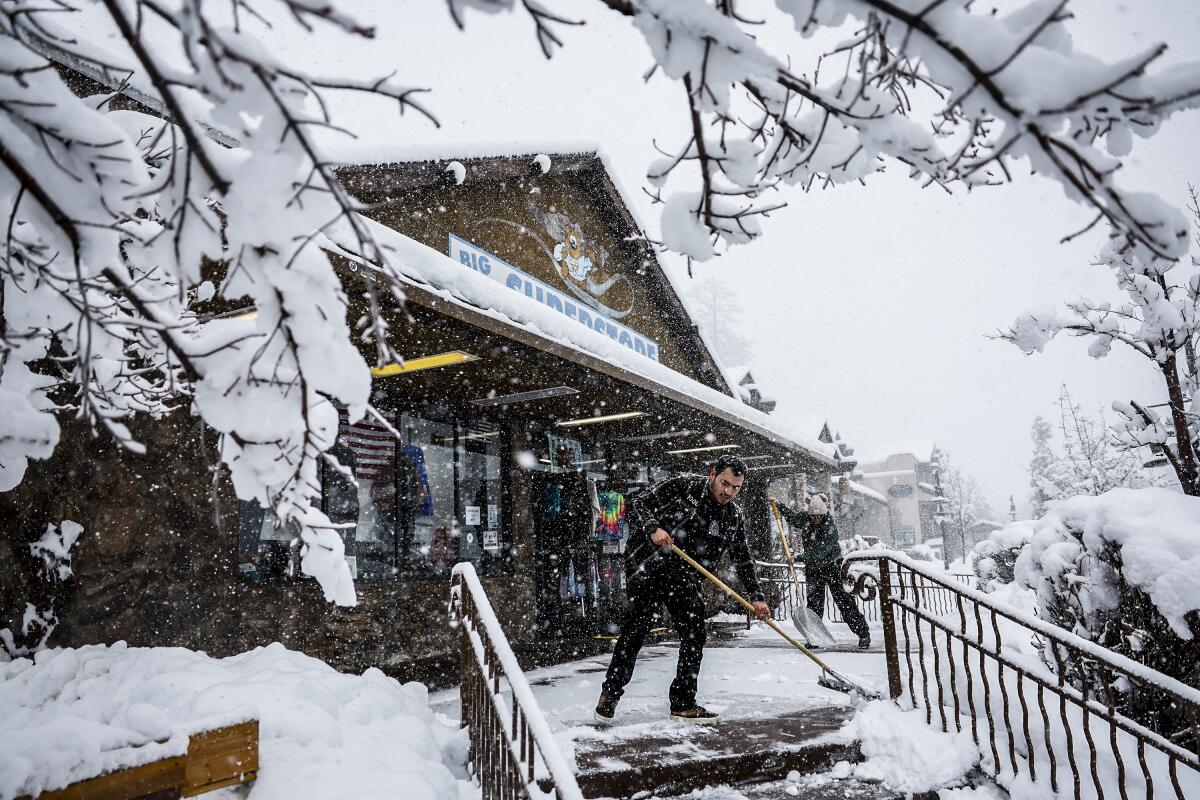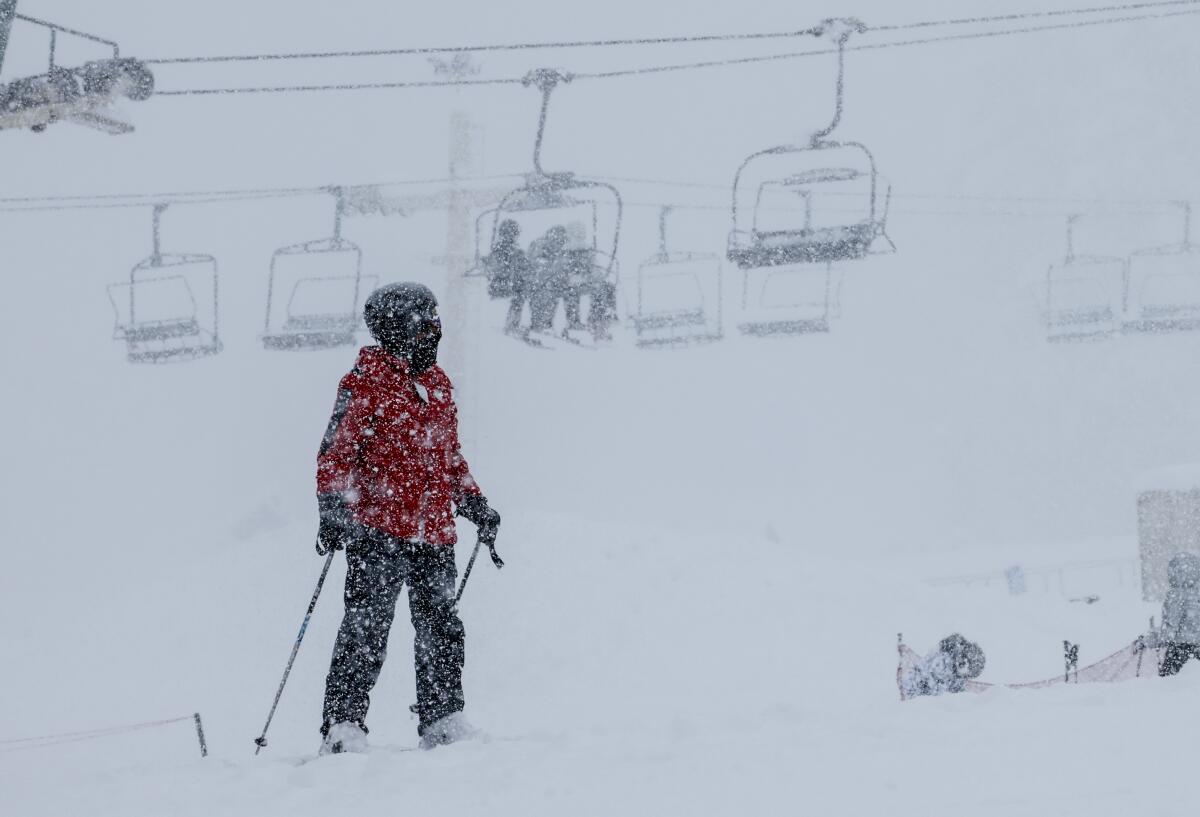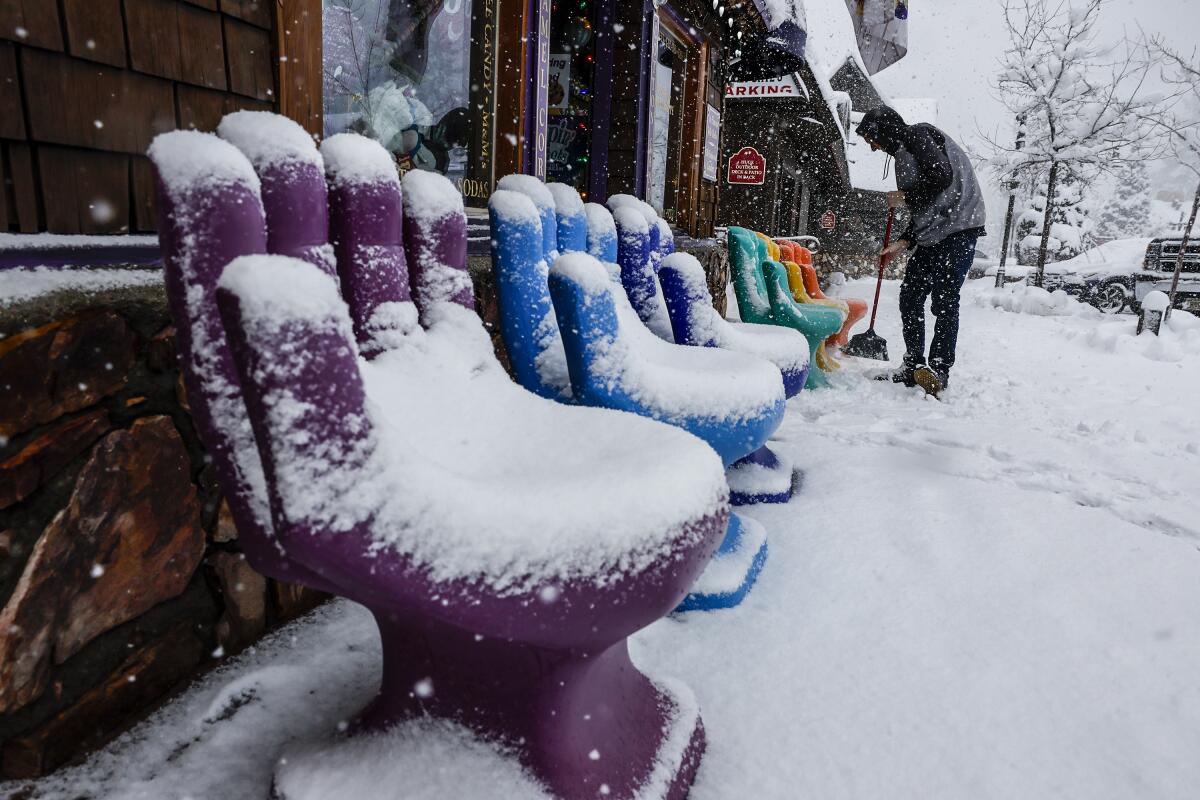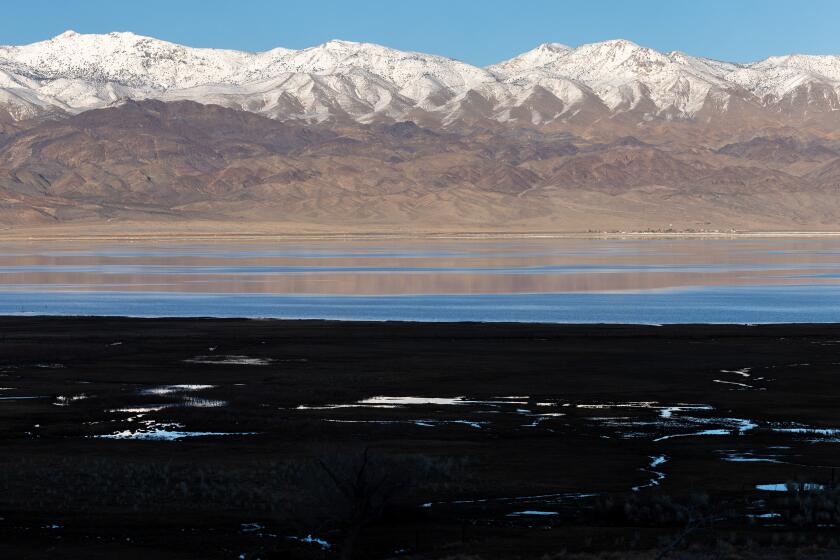Big Bear resort records snowiest February in decades thanks to persistent storms

- Share via
For outdoor enthusiasts, the series of powerful winter storms that have pummeled Southern California has provided at least one tangible benefit — an epic snow month at local mountains.
Big Bear Mountain Resort, which operates the Snow Summit, Bear Mountain and Snow Valley resorts, reported this week that it’s the snowiest February on the mountain since at least 2000. And more fresh powder is on the way early next week.

Snow Valley, which has a peak elevation of about 7,800 feet, has clocked 121 inches or about 10 feet of fresh snow this month. Snow Summit and Bear Mountain, which have peak elevations of 8,200 feet and 8,850 feet, respectively, have received 99 inches or about 8.25 feet of snow.
“Compared to where we were even a month ago, it’s really night and day, in terms of the snowfall we’ve seen come in this month,” said Justin Kanton, a Big Bear Mountain Resort spokesperson. “It’s definitely a later start than what we’re used to seeing in a typical season, but we’re glad it decided to show up. Better late than never.”
California was hit by a monster atmospheric river storm that killed at least nine people, left record rainfall and caused mudslides in the Southland.
California has experienced back-to-back atmospheric river storms this year that have translated to record-breaking precipitation along the coast and significant snowfall in local mountains. These weather systems, also called “Pineapple Express” storms, get their name from the tropical moisture they carry from the ocean near Hawaii to the mainland. The storms are better known for intense rain, but at higher elevations they can bring snow.

“We’ve had a lot of warm and very wet storms,” said Alex Tardy, a meteorologist with the National Weather Service in San Diego. “We’ve seen about three times, so far, the amount of precipitation we normally see in these areas just in February. And most of that has been snow.”
By contrast, Snow Valley last February received 87 inches — 7.25 feet — of powder while Snow Summit and Bear Mountain clocked 81 inches, or 6.75 feet. Snow fell last year at much lower elevations, down to 1,000 feet. A winter storm in late February left an unusual blanket of fresh powder on the Santa Monica and San Gabriel mountains.
While the snow season has gotten off to a late start, Tardy said, the storms have been “very productive in terms of overall precipitation.”
Storms in February have significantly boosted California’s snowpack, giving the state near-average conditions and ample water supplies.
The storms, which have also blanketed the Sierra Nevada with a near-average amount of snow for this time of year, have helped ease concerns that California might remain in a “snow drought.”
Snow sensors across the Sierra Nevada show larger accumulations in the northern section of the mountain range, where the snowpack measures 98% of normal for the date. Snowpack in the central and southern parts of the mountain range measures 81% and 78% of normal for the date, as of Friday.
Another rain event is expected to hit the region beginning early next week. That storm, while expected to be much milder than past systems this month, could bring a few inches of snow to elevations above 7,000 or 7,500 feet, according to the weather service.
An avid skier, Tardy said getting up to the mountains has been on his mind as he’s watched the forecasts.
“Now’s the time to get out there,” he said.
More to Read
Sign up for Essential California
The most important California stories and recommendations in your inbox every morning.
You may occasionally receive promotional content from the Los Angeles Times.
















